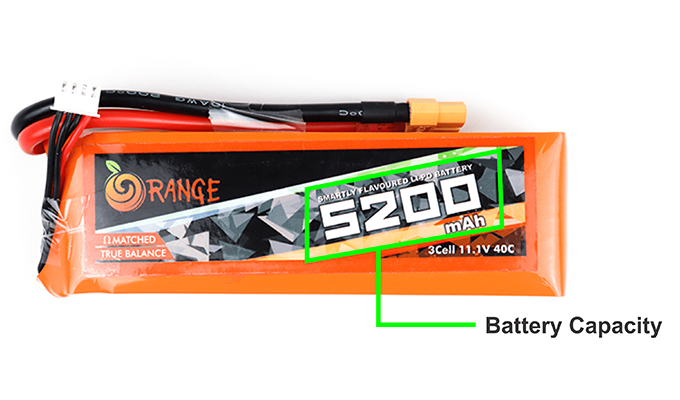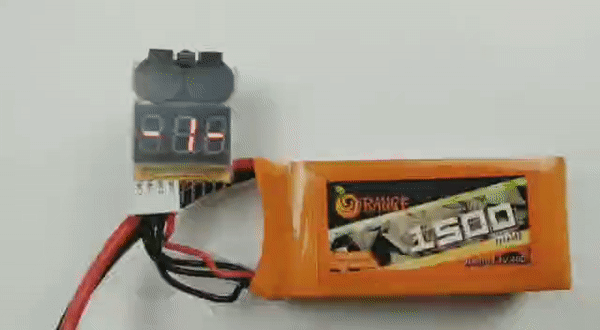How to Choose Lithium Polymer Battery for your RC Drone
Choosing a proper lithium polymer battery will not only affect the flight time but also the drone’s performance. This guide makes sure you select the right one.

What is LIPO battery?
LIPO stands for lithium-ion polymer battery or Lithium polymer battery. The abbreviations for this battery is as Lipo, LIP, Li-poly etc.
This battery is a rechargeable battery. It is a lithium-ion technology using a polymer electrolyte instead of a liquid one.
These batteries provide higher specific energy as compared to other lithium battery types. They are used in applications where weight is a critical feature, like mobile devices and radio-controlled drones and aircraft.
They have been gaining in popularity in the radio control industry over the last few years. Now, It is the most popular choice for anyone looking for long run times and high power.
What are cell configuration and battery voltage of LIPO battery?
Lithium polymer battery is constructed from the rectangular cells. You can increase the voltage of the battery using a series connection of the cells. Also, by making the parallel connection of the cells, the battery current will be increased.
The nominal voltage of a Lithium polymer cell is 3.7V. The three cell (3S) pack is 11.1V, a four-cell (4S) pack is 14.8V.
The safe operating voltage range of LIPO is, from 3V to 4.2V. For cell configuration of the Lipo battery, follow the below table,
1. Cut off voltage:
The cut-off voltage is the voltage at which a battery discharges completely. Discharging the battery below Cutoff voltage 3V could cause irreversible performance lost and even damage to the battery. This means you should set your voltage alarm to 3.2 V or 3.3V.
2. Nominal Voltage:
The nominal voltage of the LIPO is 3.7V. It is storage mode voltage of the battery.
3. Maximum/full charged voltage:
The maximum/full charge voltage is the voltage at which a battery reaches its maximum voltage. If you charge the battery above 4.2V, it is dangerous and eventually causes a fire.
How battery voltage effects on the KV rating of the drone motor?
The speed of your motors is proportional to the voltage of the battery. Higher voltage batteries are capable of turning motors faster as compare to lower-voltage batteries.
The voltage of your battery will determine the type of ESCs and motors that you can use. The motor and ESC combination will indicate what voltage is required for correct operation or RPM.
Many people get confused by brushless electric motor ratings. The KV rating of a brushless motor refers to velocity constant (v) of the motor.
The motors also have a torque constant (Kt value) and a motor constant (Km value).
An example might be something like a 1000 Kv motor with a voltage range of 10 – 24 volts. That would mean this motor will turn at about 10,000 RPM @ 10 volts up to around 24,000 RPM @ 24 volts.
Means, Motor RPM= KV rating x applied voltage
Battery capacity
Battery Capacity indicates how much power/energy the battery pack can hold. The capacity of a LIPO is measured in mAh (milliamp hours). Basically, the term mAh is an indication of the current that you can draw from the battery for an hour until its empty.
In the above image, the battery capacity is 5200mah=5.2 Amp Hour (5.2Ah). Increasing your battery capacity gives you longer flight time, but it will also get heavier in weight and larger in physical size.
There is a trade-off between capacity and weight that affects flight time and agility of the aircraft.
What is the C Rating (Discharge Rate) of LIPO battery:
By knowing the C rating and capacity of a battery, we can calculate the safe, continuous and maximum discharge current of the Lipo battery.
Maximum continuous Amp Draw= Battery Capacity X Discharge Rate.
Some batteries come with two C-ratings: “continuous” and “burst” ratings. The continuous current rating tells you how the maximum safe current your battery can discharge for long periods of time.
The burst rating tells you the maximum current your battery can discharge for short periods of time ( it is around for 10 seconds).
From there, we can calculate the burst C rating requirement using this formula:
Burst C Rating = Max Current Draw / Capacity.
In the above image, the C rating of the battery is 30. You could safely draw it at the 30 times more than the capacity of the pack, similarly a 10C pack = 10 times more, a 20C pack = 20C times more etc.
For example, you have a 2200 mAh capacity battery and it is rated for 30 C continuous, then the maximum continuous current is 2.2 * 30 = 66 Amps.
The same battery might have a 40 C burst rating, meaning the battery can safely output 2.2 * 40 = 88 Amps for short periods of time.
If C rating is too low, the battery will have more time delivering the current to your motors, and your quad will be underpowered. You could even damage the battery if the current draw exceeds safety rating.
When C rating is higher than the requirement, you won’t gain much performance improvement.
Instead of that, the battery would be heavier and you will be carrying extra weight that reduces your flight time.
How to Choose Lithium polymer Battery for Your RC Drone:
Choosing the correct LIPO RC battery for your model involves many factors. You must first have an idea of the voltage and amp requirements of the motor/prop combination that you are using in the drone. Before purchasing the battery, think about these below factor:1. Find Out How Much Current Your Drone Can Draw
- Current draw from the drone motors:
First, choose the motors according to the thrust. You can calculate the total current taken by the motor. For example, I am going to use this motor at 100% throttle and it draws 30A current per motor.
Now, the total current= 30A *4= 120A.
- Current draw from Other Components:
There are other parts such as flight controllers, RC Receiver, LED, FPV that uses the power from the same battery. It is little compared to the powerful motors so we can just add 1A to 2A to the total current draw. If you want to be a bit more precise.
2. Decide the Battery Size:
Battery size is an important parameter for more flight experience. Always Prefer to choose the battery with more capacity to serve your drone for a longer duration. The ability of a LIPO battery to provide maximum flight time in the air depends on the overweight of the drone. Considering the physical size, you have to choose the battery with a certain size which can be fit on your RC drone.
3. Battery voltage
Battery voltage or cell count is an important parameter for your investment. The higher voltage rating motors will produce higher power/RPM. The batteries with higher voltages ratings have more weight.
In the selection of the battery voltage, make sure that your motors/ESC and other electronics are able to support the voltage of your battery. Depending on the total number of motors that you are using, you need to choose what is best for your current setup.
4. Battery C rating
The Discharge rating is an important parameter of a LIPO. The complete performance of your drone is dependent on its Discharge C rating. Professionally, we suggest choosing those batteries that have maximum C discharge rating.
Normally, the high Discharge rate of LIPO battery has more weight. It will definitely increase the total weight of your drone. Ultimately, the complete flight time of your drone gets reduced.
Maximum Discharge Current = C-Rating * Capacity
Typically the smaller the capacity of a Lithium Polymer battery, the higher the C rating needs to be and vice versa.
5. Battery Capacity
First of all, select the battery with the highest capacity which can provide longer flight time. Making a selection for a new battery for your RC drone always prefer to pick a size as per the specification of your device. Its weight should not exceed from the range that your drone cannot lift.
Considering quadcopter example, If you choose the motor which has thrust of 500gm per motor (or 2Kg thrust in total). Calculating the weight of the frame, motors, ESCs, flight controller and other electronics, it goes around 1.2Kg. That leaves 800-1000g that we can use for the battery. Normally, try to find the highest capacity of Lipo battery which has weight around 800g to 1000g.
6. Battery Connectors

There are two types of connectors are used in LiPo battery. The main connector is a power connector and the other is balance connector. Only 1S batteries have one main lead. There are a variety of different types of connectors that vary in size, current rating, and ease of use.
Why the LIPO battery’s always come with female connectors.?
If a battery has two male pins are striking out, there is a chance to get bent and short together. For Safty reason, the LIPO battery uses the Female connector.
- Discharge /Power connector:
You will get different types of battery connectors in this category. For a normal drone, the most popular connector is XT60 connector. The XT60 is rated only at 60A. Sometimes, your drone has the requirement of high current that time you have to go for the different connector.
- Balance connector:
The balance lead/connector is mainly used for balance charge to ensure all cell voltages are equal. It allows you to monitor the voltage of each cell. You can check the voltage of each cell using LIPO voltage checker. For more knowledge, refer the below GIF.
I hope that this article guides you through the thought processes involved in choosing of lipo battery for your RC drone. If you have any other ideas about choosing a lipo battery, please leave your ideas here, we would be happy to hear from you!











Exceptionally simple yet to-the-point knowledge. It helped me a lot in the interview.
I liked your article. You’re a skilled writer
and I read your stuff pretty often and you’re continually
coming up with good content.
Keep raising the bar with the great work pal!
lots of information provided which is generally not known to a hobbyist
Very Informative